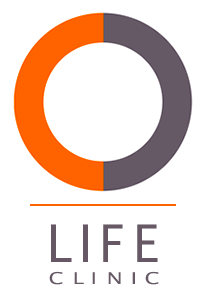Unlocking Fertility: The Promise of Ovarian Rejuvenation

Unlocking Fertility: The Promise of Ovarian Rejuvenation
What is Ovarian Rejuvenation?
Ovarian rejuvenation is a medical technique aimed at improving the health and function of a woman’s ovaries, potentially boosting fertility and delaying menopause. It involves treatments like injecting platelet-rich plasma (PRP) or stem cells into the ovaries to stimulate egg production and enhance hormonal function. This can be particularly beneficial for women with diminished ovarian reserve, premature menopause, or fertility challenges.
Ovarian rejuvenation is emerging as a groundbreaking advancement in fertility treatments. While still in its early stages, initial successes are providing hope for women facing infertility due to diminished ovarian reserve or other ovarian function issues. These promising outcomes suggest that ovarian rejuvenation could significantly enhance the success rates of IVF and other fertility treatments.
How Does PRP (Platelet-Rich Plasma) Work in Ovarian Rejuvenation?
PRP (platelet-rich plasma) works in ovarian rejuvenation by using a concentrated mixture of the patient’s own blood platelets, which are rich in growth factors. These platelets are injected directly into the ovaries, releasing growth factors that stimulate ovarian tissue repair and enhance function. Platelets, a natural source of various growth factors, are present in biologically determined ratios. Plasma, typically a thin yellowish fluid, is often referred to as “liquid gold” due to its colour. PRP helps to “wake up” dormant or less active ovarian cells, encouraging them to produce healthier eggs and more balanced hormones. This method is still under research but has shown promising early results in improving ovarian health and potentially boosting fertility.
Revitalizing Ovaries: A Simple 4-Step Guide to PRP Therapy”
PRP therapy for ovarian rejuvenation is a straightforward process involving four key steps. First, blood is drawn from the patient. Next, it’s spun in a centrifuge to separate the platelets from other blood components. The platelet-rich plasma is then extracted and finally, injected into the ovaries to stimulate tissue repair and improve ovarian function.
·

Blood Draw: A small amount of the patient’s blood is drawn, typically from the arm.
·

Centrifugation: The blood is placed in a centrifuge and spun at high speed to separate the platelets from other blood components.
·

PRP Extraction: The concentrated platelet-rich plasma, which contains growth factors, is carefully extracted from the vial.
·

Injection: The PRP, rich in growth factors, is injected into the ovaries using a fine needle, targeting the ovarian tissue to stimulate rejuvenation.
What are the potential benefits of ovarian rejuvenation?
Ovarian rejuvenation offers several potential benefits. It can improve ovarian function, leading to better hormone balance and overall reproductive health. Increased egg production is another key benefit, which can enhance fertility, making it easier for women to conceive naturally. Additionally, ovarian rejuvenation may delay the onset of menopause, extending the reproductive years and alleviating menopausal symptoms. For women undergoing in vitro fertilization (IVF) treatments, ovarian rejuvenation can potentially improve outcomes by enhancing the quality and quantity of eggs retrieved. Overall, these treatments offer hope for women facing fertility challenges or early menopause, improving their chances of achieving a successful pregnancy.
Who is a candidate for ovarian rejuvenation?
Candidates for ovarian rejuvenation often include women experiencing premature ovarian failure, where the ovaries stop functioning before age 40, and those with diminished ovarian reserve, indicating a reduced number of viable eggs. Women undergoing early menopause, typically before age 45, can also benefit from this treatment. Additionally, ovarian rejuvenation is an option for women who have had limited success with traditional fertility treatments, such as in vitro fertilization (IVF). Women looking to enhance their fertility, improve egg quality, or extend their reproductive years are also potential candidates.
How do ovarian rejuvenation treatments compare to traditional fertility treatments?
Ovarian rejuvenation treatments provide an alternative or complementary option to traditional fertility treatments like IVF. They are often considered when traditional methods have failed, offering a new hope for women who haven’t had success with conventional approaches. Ovarian rejuvenation, using techniques such as platelet-rich plasma (PRP) injections, aims to improve ovarian function and egg quality, potentially enhancing the success rates of IVF. Unlike traditional treatments that focus on stimulating the ovaries to produce eggs, rejuvenation treatments seek to revitalize the ovarian tissue itself. This holistic approach can be combined with traditional methods to optimize fertility outcomes and extend reproductive potential.
How long does it take to see results from ovarian rejuvenation?
The timeline for seeing results from ovarian rejuvenation in terms of fertility improvement can vary. Some women may notice changes within three to six months, such as better hormone levels and more regular menstrual cycles, which are indicators of improved ovarian function. Others may take longer to see noticeable effects, sometimes up to a year. The specific treatment used, such as PRP or stem cell therapy, and individual factors like age, overall health, and the degree of ovarian decline, significantly influence the timeline.
Are there risks or side effects associated with ovarian rejuvenation?
Ovarian rejuvenation carries potential risks and side effects, including infection at the injection site, ovarian hyperstimulation, and bleeding.
Ovarian hyperstimulation syndrome (OHSS) occurs when the ovaries overreact to the treatment, leading to swollen, painful ovaries. Bleeding is another risk, particularly during or after the injection of platelet-rich plasma (PRP) into the ovaries. This bleeding can result from the needle puncture, and while usually minor, it can occasionally lead to more significant complications if not properly managed.
There’s also the possibility of not achieving the desired outcomes, such as improved fertility or ovarian function. As these treatments are relatively new, comprehensive long-term safety and efficacy data are still being gathered.
What is the success rate of ovarian rejuvenation treatments?
Success rates for ovarian rejuvenation treatments vary widely due to individual conditions, treatment methods, and ongoing research. While some studies show promising results, definitive success rates have not been universally established.




